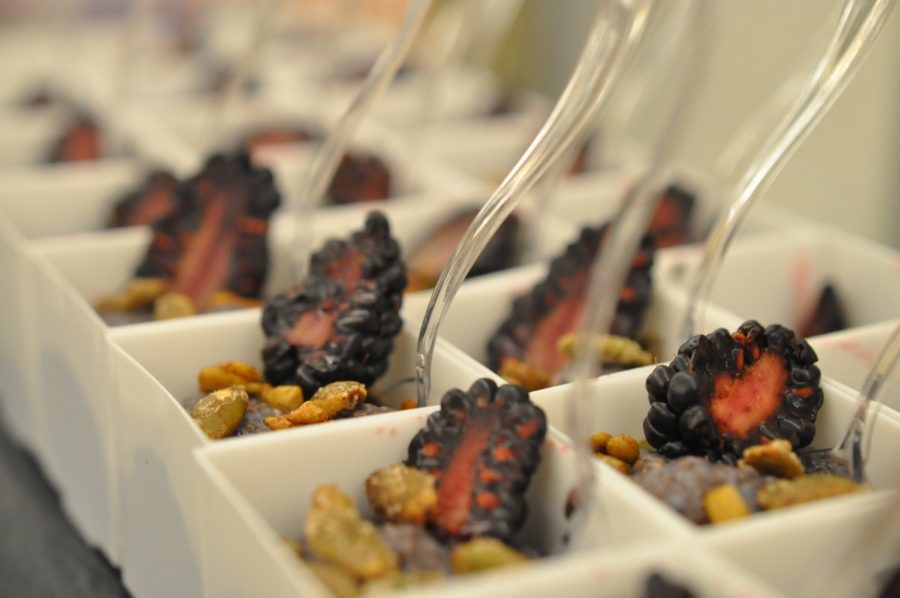
FLIK Family Friday: Navigating Food Allergies
According to the leading food allergy resource organization, FARE (Food Allergy Research & Education), roughly 32 million Americans, and 1 in every 13 children, are living with a potentially life-threatening food allergy. It is very likely you or someone you know is managing a food allergy, and we hope this article sheds some light on how you can safely prepare food for someone managing an allergy.
Food Allergies 101
So, what exactly is a food allergy? A food allergy occurs when someone’s immune system mistakes a harmless protein in a food (allergen) as a threat and attacks it. The immune response can vary from mild to severe, and it is totally unpredictable what the reaction will be, especially with increased exposure to the food. Allergies can develop in childhood, adolescence, or adulthood, and sometimes children can outgrow their food allergies. Although people can be allergic to any food, the FDA has coined the “top 8” to account for about 90% of all allergies. The “top 8” include peanuts, tree nuts, finfish, crustacean shellfish, eggs, milk, wheat, and soy. Other common allergies include, but are not limited to legumes, seeds, stone fruit, corn, and sesame which is being considered as the 9th major allergen.

Managing a Food Allergy
The unknowns associated with a new diagnosis can be scary, but learning how to manage food allergies is key to living a healthy, happy, and safe life. It is important to understand that any amount of a particular food can cause a reaction; there is no “safe” amount of food that someone with an allergy can ingest. Therefore, the only way to truly manage a food allergy is to avoid the allergen completely. Reading food labels, avoiding cross-contamination (using clean equipment, washing your hands), and properly cleaning and sanitizing surfaces are three steps to ensuring individuals with food allergies can eat safely.
Reading Food Labels
The FDA requires food companies to include top 8 allergens on all food labels. They can be listed in a “contains” statement after the ingredients list, “contains: milk, wheat and soy”, or, the allergen may be listed alongside ingredients “flour (wheat), salt, whey (milk)”. This labeling law makes it easier for people with a top 8 allergy to identify their allergen easily. However, keep in mind, if someone has an allergy outside of the top 8, garlic, for example, garlic does not have to be listed on the ingredient list if it is less than 2% of the total product weight. Therefore, people with these allergies tend to avoid foods with “spices” or “flavorings” in the ingredient list.
What About Gluten?
Gluten is a protein found in wheat, barley, and rye. Although it is not considered a top 8 allergen, many people, including those with Celiac Disease, avoid gluten, and therefore treat it the same way as any other food allergy. It is important to note that “gluten” will not be listed in a “contains” statement, or in an ingredient list, so becoming familiar with what ingredients contain gluten is key. When looking for a safe option for a gluten free guest, look for products labeled “gluten free”, or serve whole foods that naturally do not contain gluten, like meat, fruits, vegetables, milk, and rice.

Preparing a Safe Snack for Others
Although you may not have anyone in your home managing a food allergy, it is likely you will host a play date, dinner party, or be asked to prepare a snack for someone who does. Always be sure to ask about allergies and have prepackaged snacks on hand as a safe option. Prepackaged snacks avoid cross contact, and often make food allergic individuals feel safer. Enjoy Life, Home Free, free2be, and Partake Foods all make allergy friendly individually packed snacks that are great for kids and adults alike. Depending on the allergy, fruits and vegetables tend to be safe options. Stock up on whole fruit, applesauce, carrot sticks, and bell peppers as safe snacks. When in doubt, always save the package or packages to share with guests so they can check the ingredients themselves.
Although navigating food allergies may seem daunting, asking questions, reading food labels, and avoiding cross contact are simple ways to safely prepare meals and snacks for anyone with a food allergy.
+++
At FLIK Hospitality Group we believe in great food, great service, and great people. Our wellness first approach ensures our food supports healthy and delicious choices, specially curated by our team of culinary experts and registered dietitians. At FLIK, we believe in seasonality in sourcing our ingredients and providing a customized approach to the culinary and hospitality needs of each client. Our dedication to providing quality hospitality service is unparalleled in the industry.
Have feedback or questions for our team? Email us at flikblog@compass-usa.com.
Interested in working with us? Apply today!